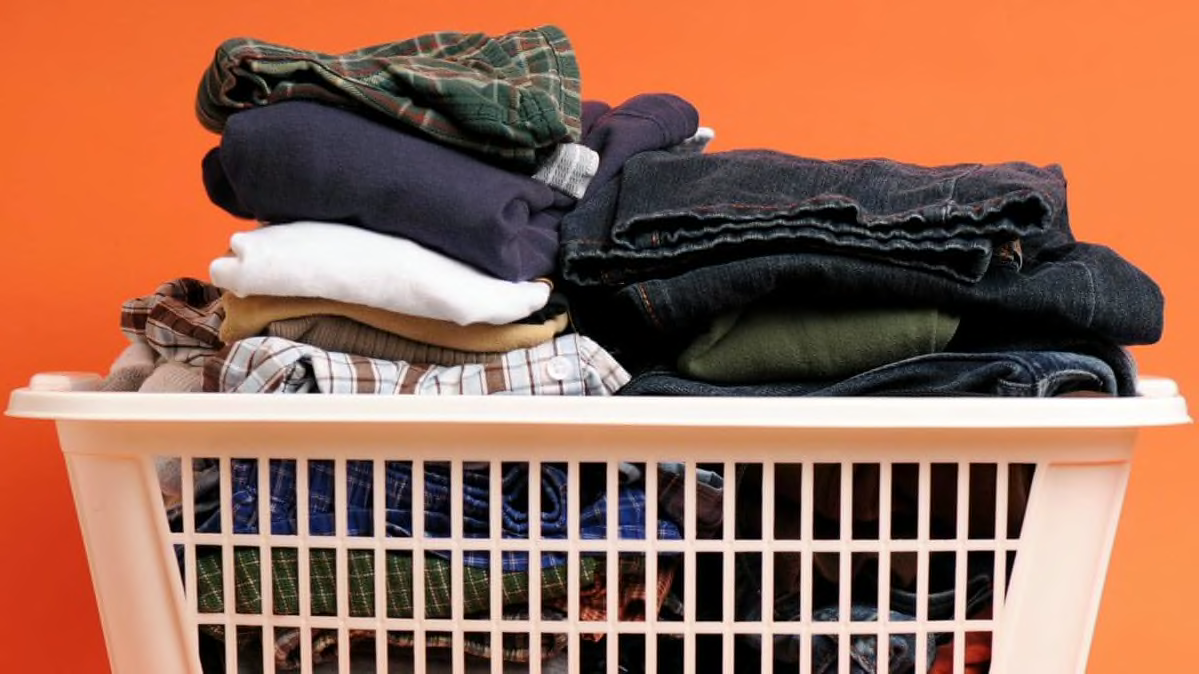
Wearing black never goes out of style. But show up dressed in black that's faded and covered in fuzzies or detergent streaks, and the look is anything but cool. Here's how to keep your black clothes looking good, from the pros at Consumer Reports.
Washing Tips
The more you wash, the more black dye washes away, especially with denim. So between washings try airing out clothes. See a stain? Blot with a white cloth and a mixture of 1⁄2 cup water and a teaspoon of clear or white liquid dish detergent. Then blot with plain water.
And when stuff is stuck to the fabric, gently scrape with the edge of a rounded spoon, then blot with a white cloth and the cleaning solution above.
Sort by Color and Weight
Mixing fabrics, colors, and very dirty items with not-so-dirty can have disastrous results. When new, black clothes can bleed dye onto lighter colors. Washing delicates with heavy fabrics, using the delicate setting, can damage the fine items and do a poor job cleaning the heavier fabrics. So sort like items by color and weight.
Turn Clothes Inside Out
Protect the outside of the black garment by turning it inside out, shielding it from the agitation or tumbling, which breaks down the fibers and causes them to appear faded. Zip zippers and button shirts to prevent snagging.
Wash in Cold Water
The cold water helps keep the fibers in black fabrics from losing their color. Inspect your clothes to see how dirty they are, and adjust the washing machine's soil setting, using the light-soil setting when possible because it's gentler on fabrics than the medium- or heavy-soil setting. And use the shortest cycle possible needed to get them clean. Less time in the washer means less fading.
Choose the Right Detergent
When washing black laundry, avoid detergents that contain bleach alternatives. Use a detergent that can tackle the stains that show up in your laundry hamper, whether they're stains from body oil, dirt, red wine, or grass. Few detergents we tested can take them all on.
In our laundry detergent ratings you'll see liquids, powders, and pods, including detergents that manufacturers promise are free of dyes and fragrances and meant for folks with sensitive skin. You'll also see detergents in our ratings that are claimed to be environmentally friendly.
Measure Detergent (Don't Pour It Freestyle)
Streaks of laundry detergent jump out on dark clothes, and the culprit is usually either too much detergent or water that's too cold. Detergent doesn't dissolve well in very cold water and can leave streaks. Powder detergents can clump and leave patches on clothes. So it's important to measure the detergent.
The detergent's enzymes start to work when the water is at least 60° F. Most cold tap water is around 60° F to 75° F, but it may be around 40° F in colder regions in northern states. Automatic temperature control can help. This washer feature adjusts the water to the optimal temperature for the selected setting. All full-size front-loaders and most top-loaders in our tests have this feature, and some compact washers do too. Click the Features & Specs tab in our washing machine ratings to find the models that do.
If you're shopping for a new washing machine, check our washer buying guide. Then see our ratings of front- and top-loaders, and use the filters to help narrow your options.
Drying Tips
Tumbling in the dryer with other clothes roughs up the surface of the fibers, creating a halo of fuzz that catches light and makes black clothes appear faded. Instead, keep the garments turned inside out and hang them to dry in your laundry room, or lay sweaters flat to dry. The sun will fade them, so do not hang them outside.
Make It Last: Clothing
Want to make your clothing last longer? On the "Consumer 101" TV show, Consumer Reports' Sara Morrow offers up tips for helping you get the most out of your wardrobe.

















